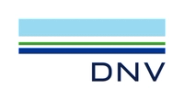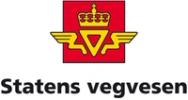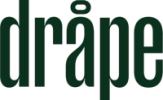New High Efficiency Audio Option Added for DAB Digital Radio
WorldDMB has announced further details of its plans to create a choice of audio coding for Digital Audio Broadcasting (DAB). The international organisation, which promotes Eureka 147 based digital broadcasting, has confirmed that a draft technical specification “DAB Audio Broadcasting (DAB); Transport of AAC audio” is being submitted to the international standard body ETSI. Following submission to ETSI it is expected compatible receivers can be designed and broadcast services able to be introduced as early as 2007. At this stage, the development is known as “Working Title Optional Audio Codec”. A Marketing Task Force has been set up to develop a consumer-facing name which will be announced early in 2007.
The main features of this new highly efficient audio codec for DAB digital radio are:


¿ Latest MPEG-4 audio codec delivers exceptional performance efficiency;
¿ More stations can be broadcast on a multiplex;
¿ Greater station choice for consumers;
¿ More efficient use of radio spectrum;
¿ Lower transmission costs for digital stations;
¿ New receivers backwards compatible with existing codec standard;
¿ Current MPEG Audio Layer II services and consumers unaffected;
¿ Compatible with existing scrolling text and multimedia services;
¿ Robust audio delivery with fast re-tuning response time;
¿ Optimised for live broadcast radio;
¿ Broadcasters/regulators can select either standard MPEG Audio Layer II, or optional high efficiency advanced audio codec, or both, to suit their country needs.
Until now, DAB digital radio broadcasters have always used MPEG Audio Layer II coding. In the years since the DAB digital radio standard was first defined, more efficient coding schemes and algorithms have been devised. These would allow audio with equivalent or better subjective quality to be broadcast at lower bit rates. At the 2005 General Assembly in Prague, the Technical Committee was asked to investigate the options for adding an additional high efficiency audio coding scheme alongside standard MPEG Audio Layer II. The proposal being submitted to ETSI allows for the parallel use of both audio coding options and ensures that existing listeners and DAB digital radios will not be disrupted and receivers which include the new high efficiency codec will also decode all standard MPEG Audio Layer II audio services.
In his report to the 2006 General Assembly meeting in Korea this week WorldDMB’s President, Quentin Howard, expressed his thanks to the technical experts who have led the work. “At the start of the year the Technical Committee set up a special Task Force to bring together a group of international audio experts. They have thoroughly reviewed the technical options. This included not just the possible coding schemes, but also different ways of broadcasting the encoded audio within the DAB system. In the past few months they have drawn up a draft specification, which will be submitted to ETSI this autumn. We owe each and every member of the Task Force our thanks for the excellent work they have done.” Further details of the draft specification are contained in the Notes for Editors.
Frank Herrmann, Chairman of the Technical Committee added: “The Task Force took account of the special conditions and transmission parameters needed for challenging mobile and fixed reception conditions. This work represents some of the most advanced techniques for broadcasting digital radio services. We have created a very reliable system with a variety of technical options to suit broadcaster’s needs.”


Broadcasters, Regulators and Governments will now be able to select the right audio coding solution for them. In some markets, such as Australia, the Government signalled a desire to use a highly efficient codec for radio services. In more developed markets where DAB has achieved significant penetration including the UK, Denmark and Norway, broadcasters intend to continue to broadcast all digital radio stations using MPEG Layer II for the foreseeable future.
Larissa Erismann, who chairs WorldDMB’s Marketing Committee commented, “The technical work has delivered a great solution and we are developing the marketing strategy to make sure that WorldDMB helps deliver the consumer benefits. One of our tasks is to establish the best way of presenting the exciting new possibilities this efficient audio coding opens up in new markets, while reassuring existing digital radio owners and explain to retailers and the press that there will be no disruption to well-loved DAB radio stations already being enjoyed by audiences in their millions. A Marketing Task Force has been set up to consider the issues and will report early in the new year.
Frank Herrmann commented, “Existing DAB digital radio receivers will continue to work with existing DAB radio stations, new radios are expected to be backward compatible. In the rapidly changing world of consumer electronics other technologies such as DVB-T, DVD and media players continually face future compatibility issues and we will follow their successful ideas and learn from their mistakes.”
Quentin Howard highlighted some of the advantages for radio stakeholders. “In recent months, we’ve been in confidential discussions with several governments and regulators who have been very keen to start digital radio broadcasting. They welcome the publication of this specification and will want to take advantage of the multiplex efficiency to create more choice. Those countries will now have increased confidence to commit to the Eureka 147 family of standards. For broadcasters and transmission operators a key advantage is the ability to broadcast up to three times as many radio stations in a multiplex if they choose, or to configure a multiplex for a wide variety of audio together with other multimedia services available through the Eureka 147 family of standards. For consumers it offers the winning combination of more choice and digital sound quality that has already excited many millions of consumers.”
Discussions have already started with organisations responsible for the relevant Intellectual Property Rights (IPR) but negotiations have not yet been concluded. Quentin Howard noted, “The lowest price DAB digital radio costs under €45.00 in the shops and given the market potential of the new audio codec the WorldDMB Forum has confidence that the IPR owners will not create an unreasonable cost burden that could risk the market success of this exciting development.”
Howard concluded his comments, “The right solution for several of the most advanced DAB markets will continue to be MPEG Audio Layer II. That is something that the regulators and broadcasters in those countries know and understand well and they will behave responsibly and in the best interests of their consumers. But in other countries, the announcement that WorldDMB is submitting this standard to ETSI will be seen as a green light for the exciting consumer benefits of DAB digital radio.”
-o0o-
Notes to Editors:
The main Digital Audio Broadcasting specification (ETSI EN 300 401) defines how audio should be broadcast. “The DAB system uses MPEG Audio Layer II, suitably formatted for DAB transmissions. For 48kHz sampling frequency it uses ISO/IEC 11172-3 [3] and for 24kHz sampling frequency it uses ISO/IEC 13818-3 [11].”
For Layer II audio, two sampling rates are permitted, 48 kHz and 24 kHz. Each audio frame contains samples for 24 ms or 48 ms respectively and each contains the same number of bytes. The audio frames are carried in one or two respectively DAB logical frames. The draft technical specification being submitted to ETSI defines the way that audio (programme) services are carried when using MPEG 4 HE AAC v2. For AAC, two transforms are specified. For DAB, only the 960 transform is permitted with sampling rates of 48 kHz, 32 kHz, 24 kHz and 16 kHz. Each AU (audio frame) contains samples for 20 ms, 30 ms, 40 ms or 60 ms respectively. In order to provide a similar architectural model to Layer II audio, simple synchronisation and minimal re-tuning delay (i.e. station selection, or “zapping” time), AUs are built into audio super frames of 120 ms which are then carried in five DAB logical frames. In order to provide additional error control, Reed Solomon coding and virtual interleaving is applied. The overall scheme is shown in figure 1.
For generic audio coding, a subset of the MPEG-4 High Efficiency Advanced Audio Coding v2 (HE AAC v2) toolbox - chosen to best suit the DAB system environment - is used. Some additional tool specifications have been applied to optimise performance for the broadcast environment of DAB digital radio.
The draft specification also defines how familiar additional features such as radiotext is programme associated data can be carried as part of a radio station’s broadcast signal. At this stage, the development is known as “Working Title Optional Audio Codec”. A Marketing Task Force has been set up to develop a consumer-facing name which will be announced early in 2007.
The foundation standard DAB and related standards such as DMB can be seen and heard in nearly 40 countries from Canada to Australia, across Europe and the Far East. Countries including India, China and South Africa, are testing DAB and developing consumer trials. More than 500 million people worldwide are within range of a DAB/DMB transmitter, and there are nearly 1000 services on air. Created from the onset to enable mobile reception with audio, video and multimedia capabilities, the DAB standard has recently extended its lead into the world of mobile multimedia delivery through its DMB and IP applications. DMB and DAB-IP are DAB’s Mobile TV solutions and share the same core standard, infrastructure and receiver technology. The launch of the first ever Mobile TV services took place in Korea in December 2005 using DMB technology. Further DMB launches have taken place in Germany; services using IP for mobile TV have been launched in the UK; and more mobile TV launches are expected in Europe and China throughout the next year.
About WorldDMB
WorldDMB is an international, non-governmental organisation whose role is to promote the awareness, adoption and implementation of Eureka 147 based technologies worldwide. The organisation’s name refers to ‘digital multimedia broadcasting’ including radio, mobile TV and broadcast new media services. Its members include public and commercial broadcasters, receiver manufacturers and other companies and bodies committed to the promotion of services and equipment based on the Eureka 147 family of standards.







